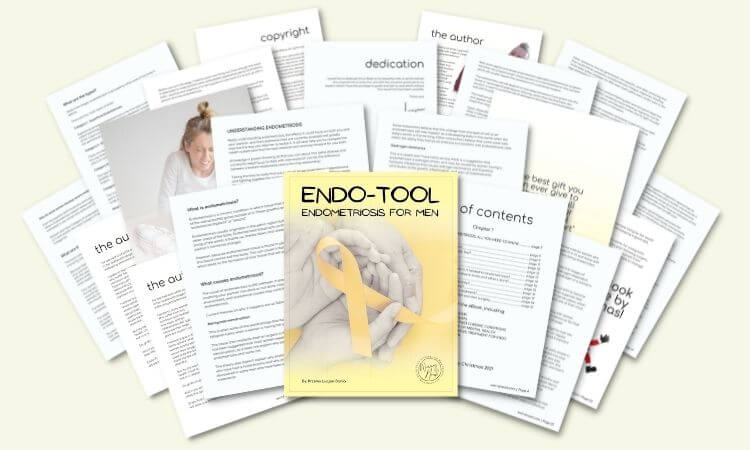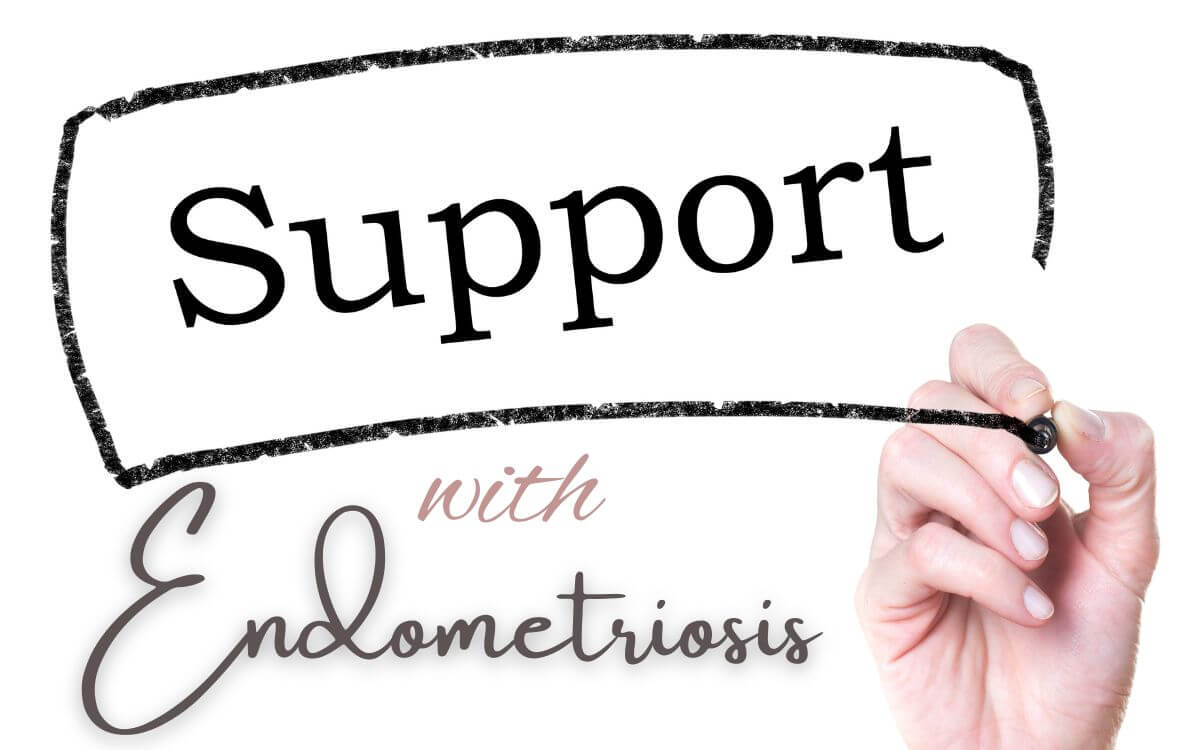How do you take care of someone with endometriosis?
There is no one definitive answer to this question, as each person’s situation is unique. How do you take care of someone with endometriosis if you are new to this disease? Well, being a husband to someone with deep infiltrating endometriosis, I have found that being in a relationship with a chronically ill person can be a very rewarding but also challenging experience.
Here are a few things that may be helpful to keep in mind…
First and foremost, it is important to be supportive and understanding. Endometriosis can be a very painful and debilitating condition, and it can be difficult for those affected to cope with on a daily basis. Showing patience and compassion can go a long way in helping your loved one feel supported.
Secondly, it is important to be informed about the condition. This will help you to better understand what your loved one is dealing with, and how you can best support them. There are many excellent resources available online and from local support groups.
Finally, it is important to create a safe and comfortable environment for your loved one. This may include making sure that they have all the necessary supplies and equipment on hand to help manage their pain, as well as providing emotional support.
What is endometriosis?
In order to know how do you take care of someone with endometriosis, we need to understand what endometriosis is, so, here’s the explanation:
Endometriosis is a condition in which the tissue that is similar to the one that lines the uterus (endometrium) grows outside of it. Endometriosis most commonly affects the ovaries, fallopian tubes, and the tissue lining the pelvis. However, in rare cases, it can also affect other organs, such as the lungs, brain, and skin.
Endometriosis is a chronic (long-term) condition that can cause pelvic pain and infertility. It is estimated to affect around 1 in 10 women of reproductive age.
There is no cure for endometriosis, but there are treatments that can help to relieve the symptoms. These include medication, surgery, and lifestyle changes. To learn what are the symptoms of endometriosis, read the next paragraph.
Also, if you want to learn everything in terms of endometriosis, I wrote a book dedicated to male partners of women who suffer from this condition, and I give away a FREE Chapter of “Endo-Tool” which alone has all the comprehensive medical knowledge, including:
- What is endometriosis?
- What are the symptoms?
- What causes endometriosis?
- What does endometriosis look like?
- What are the stages?
- What are the types?
- What is adenomyosis and how is it related to endometriosis?
- Why do some women develop severe endo and others don’t?
- Does endometriosis cause infertility?
- How is endometriosis diagnosed?
- Do types and stages affect the treatment?
- Recurrence of endometriosis after excision surgery.
FREE Chapter of “Endo-Tool”!
an Endometriosis for Men book

What are the symptoms of endometriosis?
The most common symptom of endometriosis is pelvic pain, which can be mild, moderate, or severe. Other symptoms may include:
- Pain during sex
- Pain with urination
- Pain with bowel movements
- Excessive bleeding during periods
- Bleeding between periods
- Possible infertility
If you have any of these symptoms, you should see your doctor in order to find out if you have endometriosis. Now, knowing the basics, we can answer the question “how do you take care of someone with endometriosis?”
What is the treatment for endometriosis?
The most common treatment for endometriosis is surgery to remove the tissue. This can be done in several ways:
Laparoscopy: A surgeon makes small incisions in the belly and inserts a thin, lighted tube with a camera on the end (laparoscope). The surgeon uses the laparoscope to see and remove the endometriosis tissue.
Laparotomy: A surgeon makes a large incision in the belly to remove the endometriosis tissue.
Hysterectomy: Surgery to remove the uterus and, sometimes, the ovaries and fallopian tubes. This is usually only done if other treatments have not worked or if the woman no longer wants to have children.
Endometriosis can come back after surgery. If it does, you may need more surgery or other treatments. Your doctor may also prescribe medicine to relieve pain and shrink the endometriosis tissue.
These medicines include:
Nonsteroidal anti-inflammatory drugs (NSAIDs), such as ibuprofen (Advil, Motrin IB) and naproxen (Aleve)
Hormonal birth control, such as the pill, patch, ring, or shot. These medicines can stop you from ovulating. They may also help reduce the size of endometriosis tissue.
Progestin therapy. This medicine is similar to the hormone progesterone. It can be given as a shot, pill, or intrauterine device (IUD).
Gonadotropin-releasing hormone (GnRH) agonists and antagonists. These medicines stop you from ovulating. They are usually used for a short time before surgery to shrink the endometriosis tissue.
Aromatase inhibitors. These medicines lower the amount of estrogen in your body. They are only used for women who have gone through menopause.
You may need to try more than one treatment to get relief from your symptoms. Some treatments may not be right for you if you want to get pregnant. Work with your doctor to find the best treatment for you.

What can I do at home to ease my symptoms?
You may be able to ease your symptoms with self-care measures such as:
- over-the-counter pain relievers, such as ibuprofen (Advil, Motrin IB) and naproxen (Aleve)
- heat therapy, such as a heating pad or hot water bottle
- exercise
- yoga or meditation
- a healthy diet
In some cases, alternative therapies such as acupuncture may also help. Talk to your doctor about what might work for you.
What are the complications of endometriosis?
- chronic pain
- infertility
- scar tissue in the pelvis
- bowel or urinary problems
Talk to your doctor about ways to manage these complications.
How do you take care of someone with endometriosis?
The question is, how do you take care of someone with endometriosis if you don’t suffer from it yourself? Well, having personal experience and caring for my wife for over a decade, I give you 15 tips below…
15 tips on how do you take care of someone with endometriosis!
- Be patient. Endometriosis can be a very painful and debilitating condition, and your friend or loved one may not always be up for socializing or other activities. Just be there for them, always.
- Offer to help with household tasks, childcare, or anything else that may be difficult for them to do on their own.
- Be a shoulder to cry on. Endometriosis can be emotionally draining, and it’s important to offer support.
- Educate yourself about the condition. The more you know, the better equipped you’ll be to help your friend or loved one.
- Encourage them to see a doctor or other healthcare provider. Endometriosis can be managed with medication and surgery, but it’s important to catch it early.
- Help them find a support group. There are many online and in-person groups available, and they can be a great source of information and support.
- Offer to go to doctor’s appointments with them. This can be helpful in providing moral support and taking notes on what the doctor says.
- Help them research treatments and options. There is a lot of information out there, and it can be overwhelming. You can help by doing some of the legwork for them.
- Encourage healthy lifestyle choices. Eating well, exercising, and reducing stress can all help manage symptoms of endometriosis.
- Be understanding if they need to cancel plans or miss events. Endometriosis can be unpredictable, and it’s important to respect their needs.
- Help them advocate for themselves. Endometriosis is a relatively unknown condition, and many people don’t understand it. Your friend or loved one may need help in educating others about the condition.
- Donate to or volunteer for organizations that support research on endometriosis or provide services for those with the condition.
- Share information about endometriosis with your friends and family. The more people that are aware of the condition, the better.
- Check-in with your partner regularly, even if they don’t seem to want to talk about their endometriosis. Just letting them know you’re there for them can be a big help.
- Love them no matter what! Let them know that you love and support them no matter what. Endometriosis can be a difficult journey, but they don’t have to go through it alone.

How do I talk to my partner about endometriosis?
To talk to your partner about endometriosis, it is important to:
- Choose a time when you are both relaxed and can focus on the conversation.
- Explain what endometriosis is and how it affects you.
- Be honest about your feelings and needs.
- Encourage your partner to ask questions and express their concerns.
- Work together to find ways to support each other.
If you are having trouble talking to your partner about endometriosis, consider seeking counseling or therapy. A counselor can help you communicate more effectively and work through any relationship issues that may be affecting you.
Talking about female issues isn’t easy if you are a man, but it is important to try to understand what your partner is going through. Endometriosis can be a difficult and painful condition, but it is important to remember that you are not the only man who feels alone in this. There are many other guys, like me, and there are resources for them.
If you are the partner of a woman with endometriosis, you may feel helpless and alone, but your loved one is in pain, and even though you can’t do anything to fix it, there are things you can do to help your partner through this difficult time.
I hope this helps. It is a fraction of the information, but to fully educate yourself about endometriosis, I offer you “Endo-Tool: Endometriosis for Men”, an e-Book that I wrote especially for male partners of women who suffer from this insidious condition.
I give away a FREE Chapter of “Endo-Tool”, in which you will find comprehensive medical information on endometriosis, and if you like it, I will offer you a 33% discount on the whole book, in which you will find all my practical tips and strategies to support your partner.
FREE Chapter of “Endo-Tool”!
an Endometriosis for Men book



About Me
Hi, I’m Lucjan! The reason why I decided to create this blog was my beautiful wife, who experienced a lot of pain in life, but also the lack of information about endometriosis and fibromyalgia for men…
